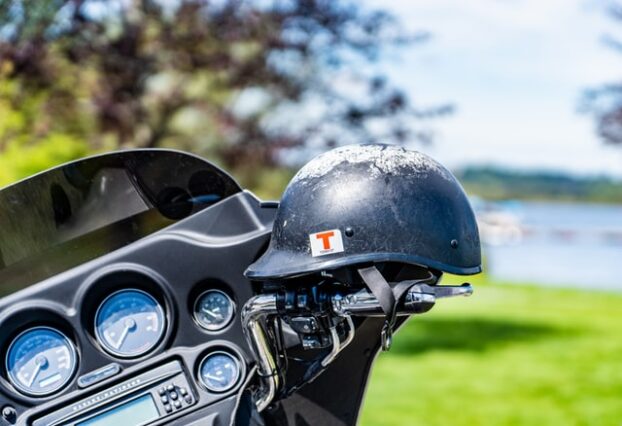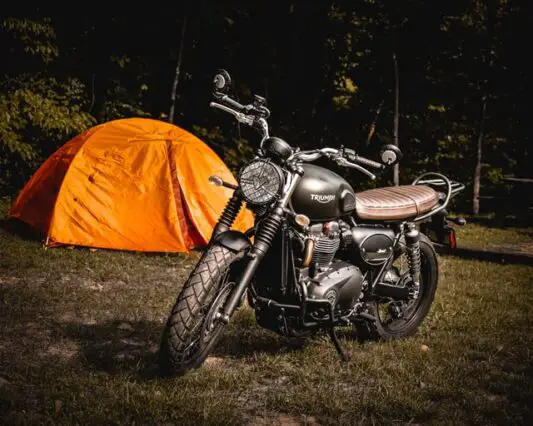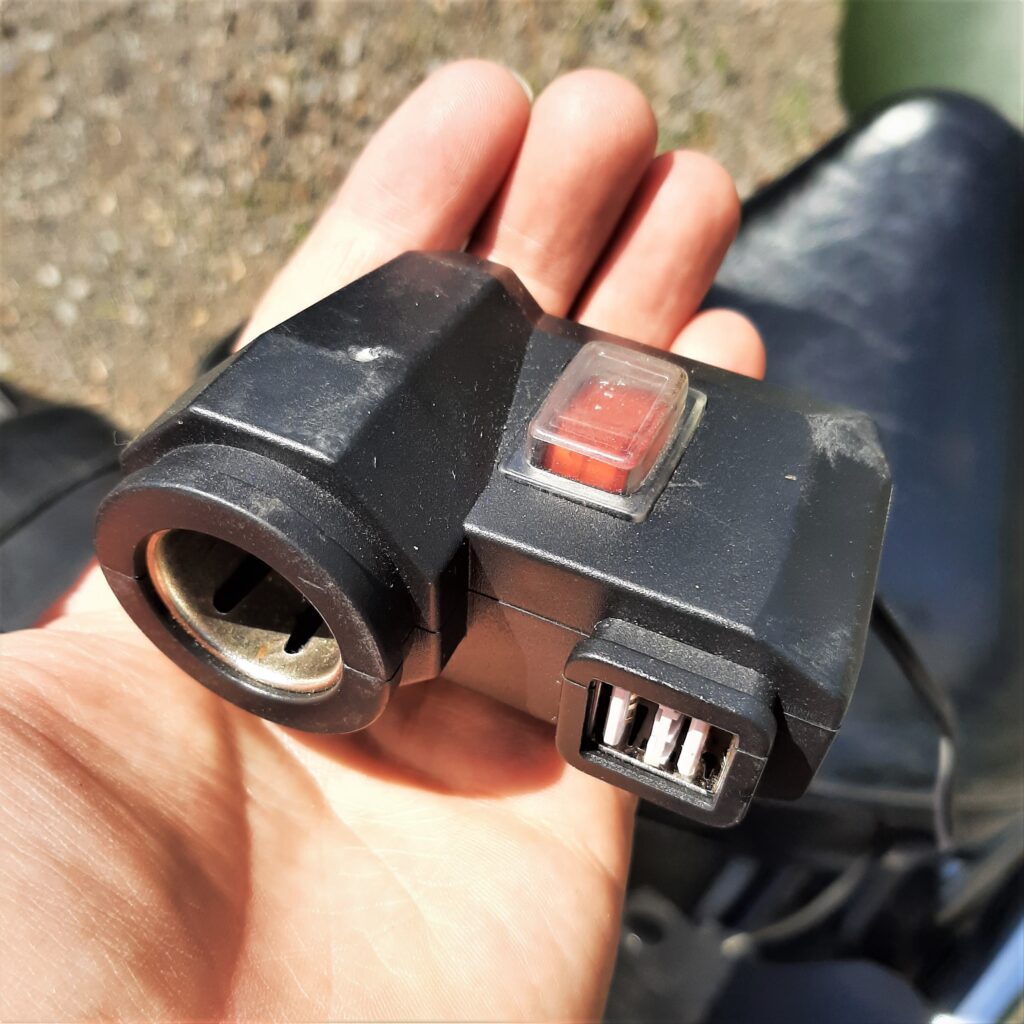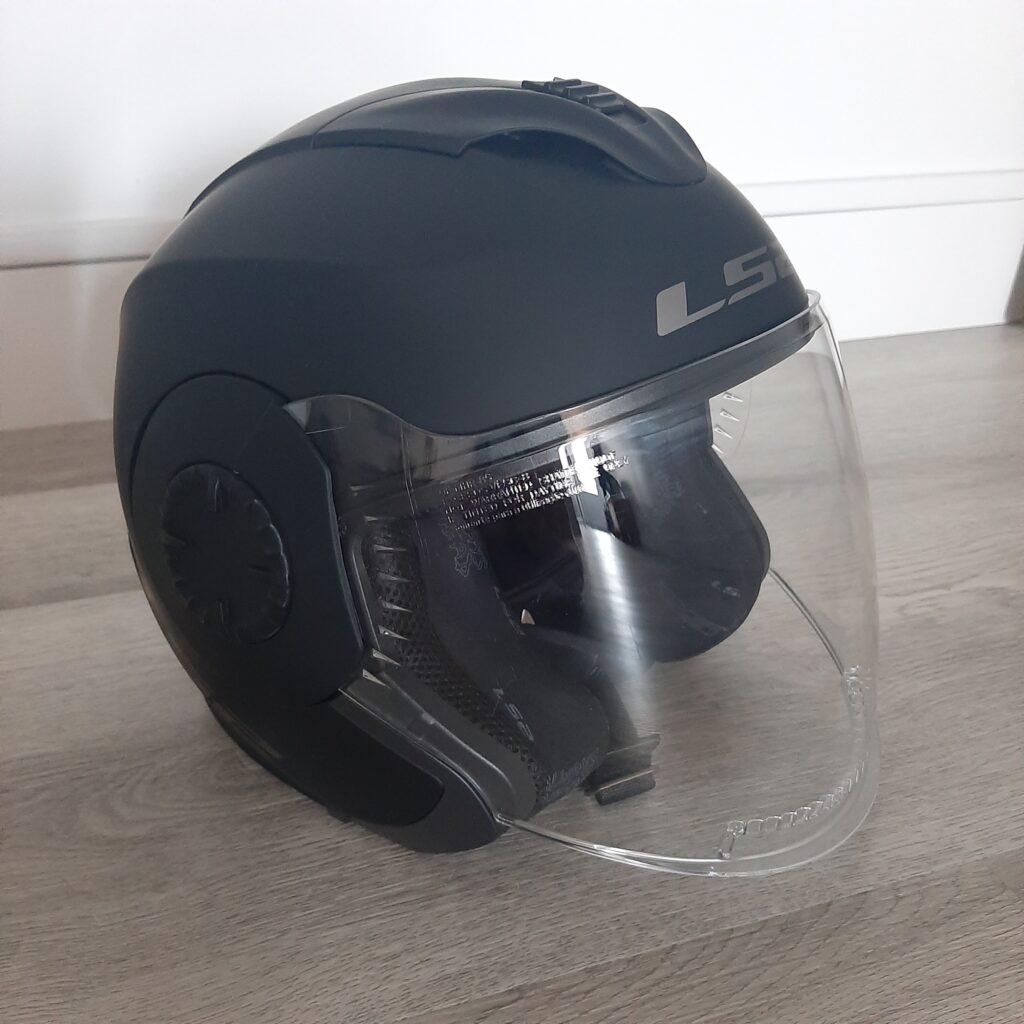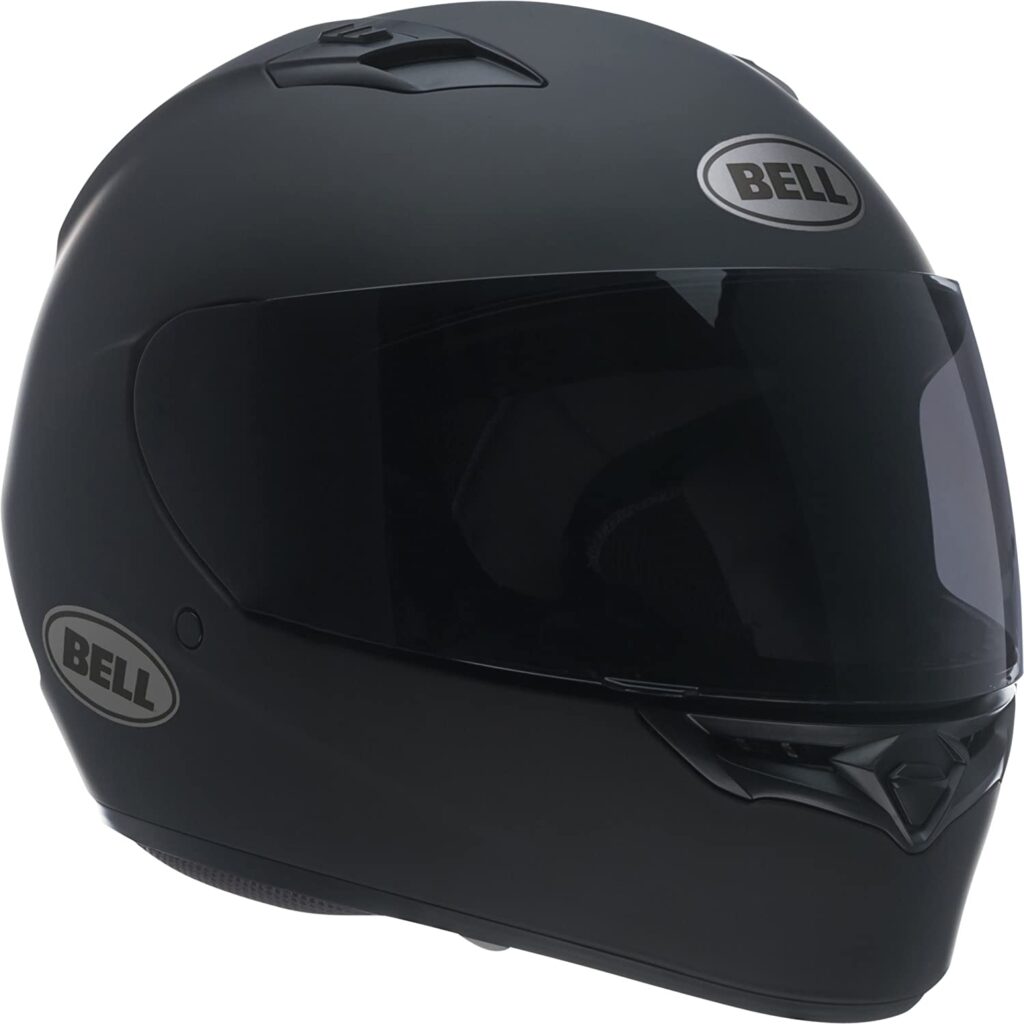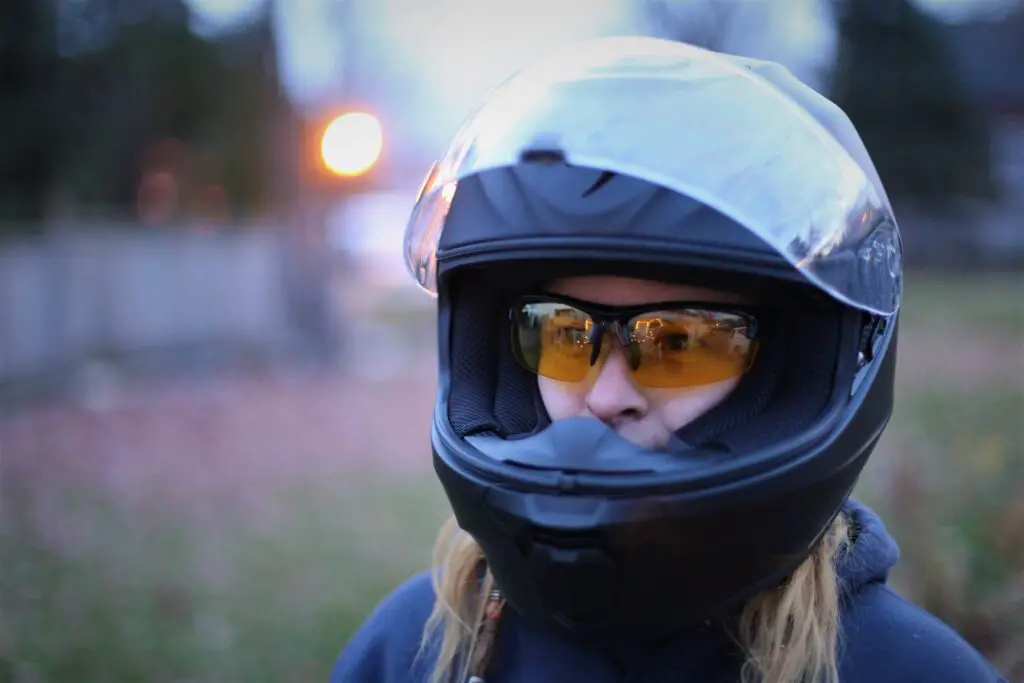Starting a motorcycle can be a puzzle. You might ask yourself how do you start a motorcycle? What am I missing?
Don’t worry; you aren’t the only one who scratched his head wondering why the engine won’t show signs of life.
How to Start a Motorcycle for Beginners or You Need a Refresh
Usually, the starting sequence is the same for most bikes.
For a carbureted motorcycle, scroll down below to the dedicated guide instead.
In this example, the motorcycle is fuel injected like most recent motorcycles these days.
- Insert the key into the ignition and put the key in the ”ON” Position
- Sit on the bike, grab the handlebars, and put the bike upright.
- Pull in the kickstand unless the bike is in neutral.
- Pull in the clutch lever with your left hand.
- Then hit the start button with your right-hand thumb.
- Release the start button to disengage the starter when the engine has started running on its own. (usually 1 to 3 seconds)
- You are ready to go, my friend.
If for some reason the bike still won’t start scroll down below to the troubleshooting section.
Be aware that it is the ”usual” way to start a motorcycle.
Some bikes, especially older ones, may need more measures or completely different ones.
Just like my bike, which one day decided that it won’t start unless a specific rule is respected for no good reason.
It got to be in neutral gear…
Even with the clutch pulled, nothing will happen when pushing the start button if the bike is in gear.
Don’t ask me why it happened.
It wasn’t necessary before, and now my bike won’t start otherwise.
I learned to live with it.
It took me a while to figure it out, though.
How to Start a Motorcycle with A Choke
Very similar to the previous method.
Yet carburated motorcycles need extra steps with the help of a ”choke” to start correctly when the engine is cold.
If you aren’t familiar, as a basic rule of thumb, a cold engine means an engine that hasn’t run for at least a couple of hours.
Or, if you prefer, an engine that is cold to the touch.
Anyways a choke job, in a nutshell, is to warm up your engine and bring it to proper operating temperature.
It does so by putting more fuel in the combustion chamber of the motorcycle.
This will make the engine run at a faster idle and higher RPM to warm it up fast.
If you don’t use the choke when the engine is cold, the engine will have a tough time doing proper combustion.
There is a high chance that your engine will catch on, turn over for a few seconds then stall.
This is because your bike needs more fuel to start up and run properly until it is warm enough.
The amount of time you need to leave your motorcycle on the ”choke” varies from bike to bike but around 45 seconds to a minute is a good starting point.
Do note that in colder weather of 60 degrees or lower (15 celsius), your carburated motorcycle might struggle to start even on full choke. Your bike will also need more ”choke time” to reach a proper engine temperature.
So here is how to start a motorcycle with a choke.
- Pull-on the choke lever all the way.
- Insert the key into the ignition and put the key in the ”ON” Position
- Sit on the bike and grab the handlebars and put the bike upright.
- Pull in the kickstand unless the bike is in neutral.
- Pull in the clutch.
- Then hit the start button. Release it when the engine has started running on its own.
- Let the bike run for a while and gradually reduce the ”choke” amount until the engine warms up and runs with a healthy idle.
- If you feel the engine slow down too much to the point it is about to die, Re-increase the amount of choke (slowly).
Don’t re-engage the choke too quickly in this situation.
Doing so may flood your engine with fuel, and it will probably stall.
In this situation, don’t worry; go back to step one and start over.
How to start a motorcycle Extended Checklist
There might still be ”small details” reasons why your motorcycle won’t start.
So let do it step by step more meticulously until it works.
Let begin with a walkaround of your bike.
- Is the killswitch on your right handlebar in the ”ON” position?
- Is your key in the ”ON” Position in the key ignition?
- Is your fuel switch in the ”ON” position?
- Is there enough gas in your fuel tank and is it ”good” gas?
- If you are low on fuel put your fuel valve in the ”RES” position.
- Walk around is over, sit on the bike now.
- Grab the handlebars and bring the motorcycle upright.
- Bring up the kickstand, make sure it is tucked in all the way.
- Pull in the clutch all the way.
- Make sure the bike is in neutral and not in gear.
- Hit the ignition button.
You might be tired and overlooked something you thought for sure was taken care of.
Also, if you are with friends and they are quite the prankster, I would double-check my fuel valve and killswitch.
Ask me how I know.
Common Problems and Troubleshooting Why a Motorcycle Won’t Start
There is a multitude of reasons why your bike may not start.
Usually, it is a simple ”Haha,” and a facepalm moment when you realize you forgot something simple.
Humans rely a lot on muscle memory and often put our brains on autopilot to do simple tasks like starting a motorcycle.
So when I mention to you if your killswitch is off, do you think for ”sure” that it is off?
Or have you visually and physically checked?
I make those mistakes often when I realize a small detail I overlooked was the problem.
Don’t feel bad if you do, and you can laugh at me if you don’t; you have my permission.
You may have forgotten to pull in the kickstand; it is a common thing to forget too.
Or you may have unexpected mechanical problems. Let hope not.
Let begin with easy solutions to try and hope that the problem is an easy fix before we take more drastic measures.
The Starter Work and Turn, but The Engine Won’t Start
In this situation, the starter does turn over, and you have plenty of juice in the battery to keep it going.
But the engine won’t start, or it will catch on for a few turns but stall a few moments later.
- Check the kill switch and make sure it is on and NOT in the ”kill position”.
- Open up that gas cap and take a look inside. Is there enough gas?
- Get off the motorcycle and take a look at the fuel switch or petcock valve. It should be in the ”ON” position.
- If the motorcycle is carburated, is the Choke pulled all the way?
If the bike has been sitting for a while, the gasoline might have turned bad.
And sitting for a ”while” might be as short as a month, or you filled up on a bad fuel batch.
I recently ran out of gas in front of a gas station (how convenient), Filled my bike to the brim, and finished the 5 remaining minutes till I got home.
Two weeks later, the bike would start with difficulties and run poorly. I was able to run it to a bike shop close by.
The mechanic found out right away when sniffing the gas tank that the issue was gasoline that turned bad.
Guess that gas I filled my bike up was already past its expiration date.
When you have the gas cap open, give the gas inside the tank a little sniff. If it smells like pungent varnish rather than gasoline, this might be your problem.
To confirm the ”bad gas” suspicions take a flashlight and look inside your gas tank.
Good gas should be almost clear, almost transparent, with a slightly yellow or green tint.
Bad gasoline will be a dark amber color.
If that is not the problem, let move on.
If you don’t know if there is enough gas since it seems low in the tank, put the fuel valve in the ”RES” or reserve position.
You might simply be low on fuel, and that will fix the problem.
Now try starting the bike.
If it does start up, quickly get to the nearest gas station to fill up.
If nothing does it, you probably have a mechanical problem.
You could try to google your situation with; The model and year of your bike followed by ”won’t start”.
You might get lucky and find someone who documented the same problem you have with an easy fix or at least know what the problem might be.
Otherwise, get a professional mechanic to take a look at your motorcycle.
Your Motorcycle Won’t Start Because Nothing Happens when Hitting the Ignition Switch.
Follow this checklist and your bike should start or at least show signs of life.
- Make sure the key is in the ”on” position and that the dash light up. If it doesn’t refer to a ”dead battery situation” below.
- Make sure your Kill switch is in the ”ON” and not the ”Kill” position.
- Put the bike in neutral and if you have one in your dash, be sure the ”neutral” light is on and register that your bike is in neutral.
- Pull in the kickstand, make sure it is tucked in all the way.
- Pull in the clutch all the way.
- Hit the ignition start button.
If nothing happens, but your dash is still lit up, there is something wrong somewhere in your electrical system.
Here are some possible situations
- Worst case scenario, your starter motor is dead for some reason.
- Your ignition button might not work anymore. The electrical wires inside the ignition button casing may no longer be linked and may need to be re-soldered.
- You might have a blown fuse.
- Your kickstand safety switch is malfunctioning or is stuck in the ”kill the engine position”.
In that case, your motorcycle will ”think” that your kickstand is deployed, so that is why it won’t start.
Try to start your bike in neutral gear. If your bike start-up but as soon as you put it in gear, it shuts down, your kickstand switch is suspect number one.
Here is the good news.
If your starter or your starter button is having a problem, you probably can push-start your motorcycle. Same if your starter fuse is blown and you don’t have a spare.
The bad news is that if it is your kickstand kill switch giving you a headache, it will probably be a little more complicated.
Push starting your motorcycle won’t work in this instance.
You are going to have to bypass the electrical system from your kickstand.
Depending on the type of bike you have and the tools at your disposition, you might get lucky.
This might be a simple task.
Some bike will make it as easy as removing a fuse while other will be quite the dislikable adventure.
Even then, you may end up with a towing and a bike shop repair bill anyways.
I hope that push-start will work, buddy 🙂
How to Start a Motorcycle with A Dead Battery
Your motorcycle won’t start because the starter turn too slowly or there is a ”clicking” sound.
In this situation, your dash still lights up but hitting the start button result in a slow and sluggish starter motor.
Your battery is too low on power in this case.
Your battery doesn’t have enough energy to spin your starter motor fast enough to start the engine.
If you get only a faint clicking sound by pushing the ignition button, that means your battery power is close to zero.
The clicking sound is your starter trying to turn over but failing to do so.
If you have the electrical cables equipment and access to your battery, the easy solution is to jump-start your battery with another vehicle.
Otherwise, link it to your battery terminal to recharge if you have a battery charger lying around.
The last resort is to push start your motorcycle.
In any case, if your motorcycle start or not and you got into this situation, consider replacing the battery.
Unless your battery is lithium type, a motorcycle that goes below 50% charge hurt is ”health”. So this low power situation is likely to come back soon in the future.
If you replace the battery and the problem persists, It might be a problem with your motorcycle alternator.
Your motorcycle won’t start and the dash is dead with no light or other sign of life when you turn the key to the ”ON” Position.
If the bike has been sitting for a while and was fine the last time you parked it, your battery is most likely completely out of juice.
Do the same as before in the section if your battery is low on power and your starter won’t turn fast enough.
Side note if your bike just ”died” randomly with everything shutting off while riding. Your battery terminals might have shaken themselves to the point of disconnecting.
If you have the tool on hand to open up your bike and access the battery, do so and check that the battery terminals are correctly linked and secured.
A Funny Story on How to Start a Motorcycle
Let me tell you a story about my neighbor Chuck and my motorcycle.
Long story short, I had to move to another city that year and was left without a garage to store my bike for that winter.
Chuck learned about it and proposed to take my motorcycle in until the snow melted.
Months later, I was on my way to my old neighborhood by bus and texted Chuck that ill be there in 5 minutes.
Walking into Chuck’s driveway, there it was, my Yamaha Vstar 1100.
Ho boy, was I happy to see that bike and finally ride again.
So when Chuck told me he tried right after I texted him to start it and told me it wouldn’t start, my heart sank.
Chuck and his wife are experienced riders themselves. They know how to start motorcycles.
So if they can’t start my bike, there might be something wrong with it.
I got up to the bike, and sure enough, pulling in the clutch and pushing on the start button resulted in nothing happening.
”You have electrical power, so why won’t you start bitch.”
Yes, I am very affectionate with my bike when I get a small spike of anger who ruin my day.
”Please let it be something easy to fix,” I told myself.
Sure enough, my prayer was answered.
I remembered there was a little something weird with my motorcycle that I got accustomed to over time.
Pulling in the clutch alone won’t be enough to complete the electrical circuit for the starter to spin.
You absolutely have to put the bike in neutral, then pull in the clutch, then push the starter button.
The bike started with a healthy engine rumble on the third starter spin…like six months of winter never happen.
I missed you too, beloved Vstar.
Conclusion
I hope you were able to start your motorcycle and found this How-to guide helpful.
If you haven’t started your motorcycle by push starting it yet, I strongly recommend that you do.
Find somewhere with a slope that you can practice it safely until you get the hang of it.
This is a skill that will most likely get you out of a jam someday.
Better to be prepared for this situation and know what you are doing rather than feel stressed and make mistakes.
Like dropping your bike while trying to push start it because you are not comfortable doing so.
I am looking forward to seeing everyone out on the road.
Ride safe.
